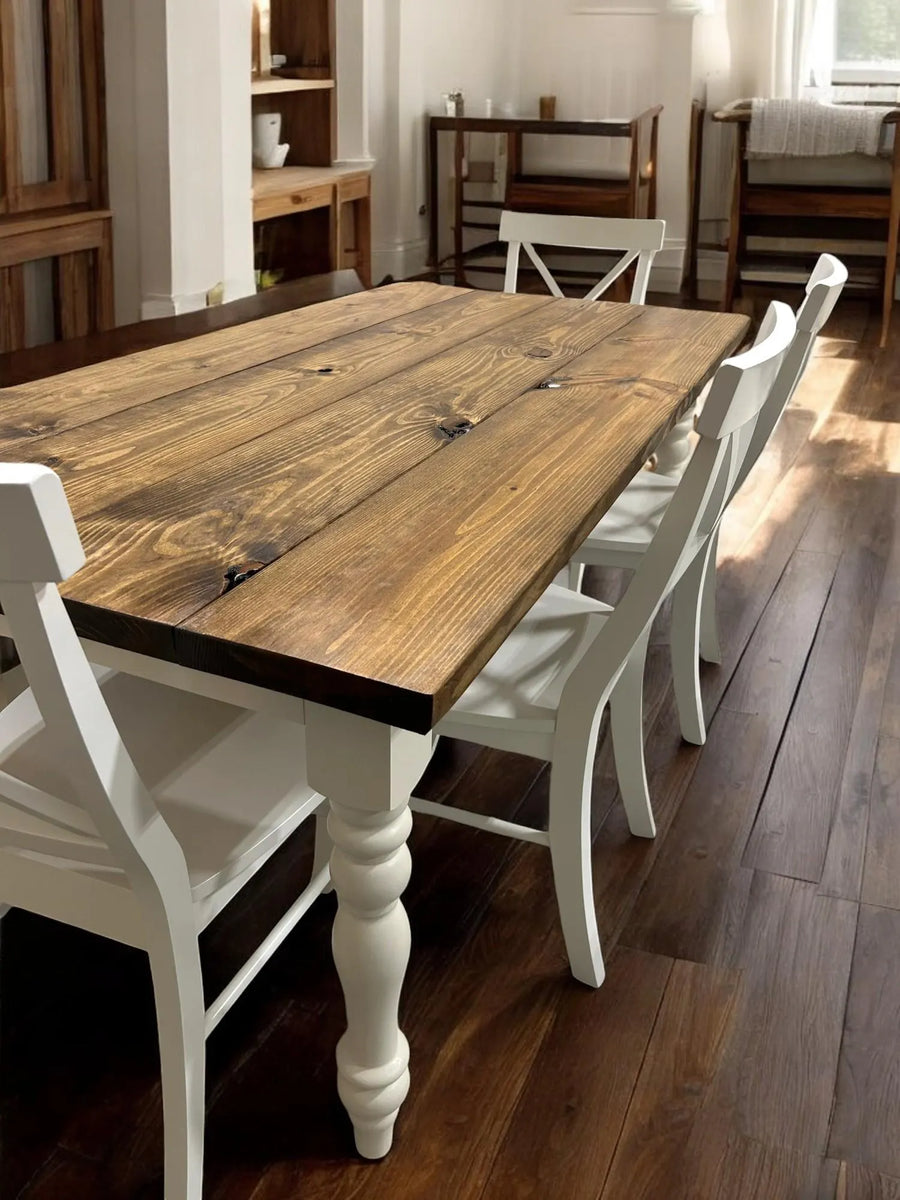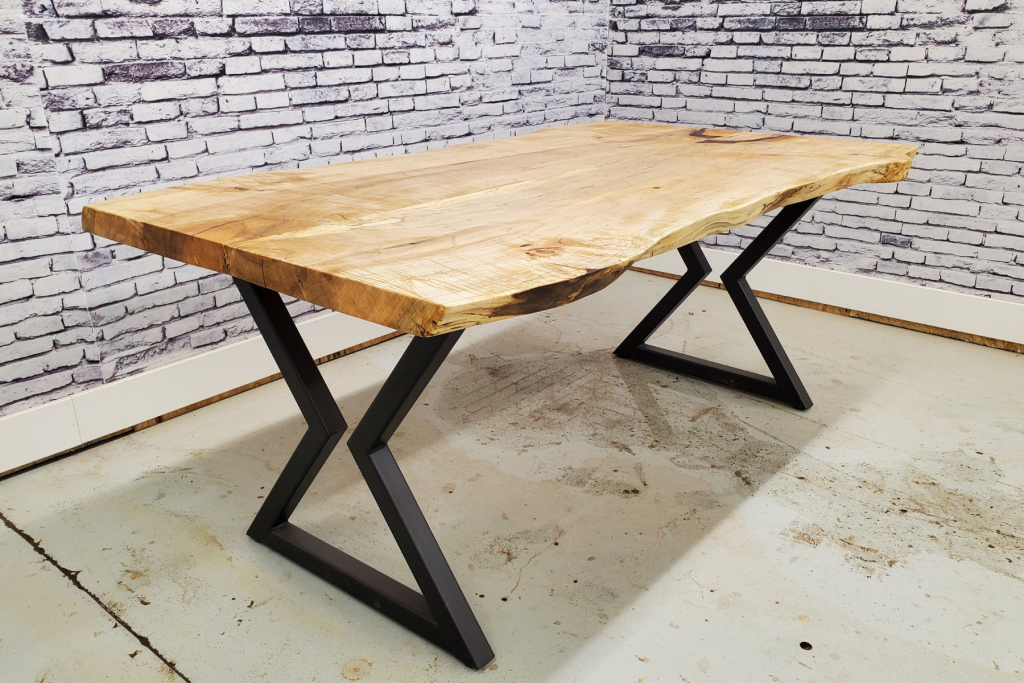Transform Your Furniture with Premium Dining Table Legs Wood Options
Transform Your Furniture with Premium Dining Table Legs Wood Options
Blog Article
Trick Variables to Remember for Table Legs Timber Choices
When selecting timber for eating table legs, a number of essential variables necessitate cautious consideration to guarantee both functionality and visual charm. The selection of timber type, defined by its durability and special grain patterns, plays an essential function in the total style and longevity of the piece. In addition, one should ponder upkeep demands and the environmental implications of sourcing products. As these components link, they considerably influence the final end result of your eating table. However, understanding the subtleties of each factor can be complex, leading to essential decisions that warrant further exploration.
Wood Types and Qualities
When choosing timber for eating table legs, it is important to comprehend the one-of-a-kind features of various timber types. Different timbers offer unique advantages and disadvantages, affecting both the toughness and visual allure of the ended up item.
Hardwoods, such as cherry, maple, and oak, are generally chosen for their stamina and resistance to put on. Oak, understood for its remarkable resilience, likewise includes a prominent grain that can add character to the table. Maple supplies a smooth surface area and is less prone to bending, making it a reliable option for useful furniture. Cherry timber, with its abundant color that strengthens with time, provides a glamorous look but may require more upkeep to avoid scratches.
On the various other hand, softwoods like pine and fir are much more inexpensive and easier to deal with, yet they are much less durable than woods. Pine is light-weight and features a warm, rustic appearance, making it a favored choice for laid-back eating settings. Nonetheless, it is a lot more at risk to scratches and dents.
Recognizing these qualities will assist in making a notified choice to make certain the legs of the eating table fulfill both useful and aesthetic needs.
Grain Patterns and Aesthetic Appeal
The timber's grain is not just a visual characteristic; it imparts an one-of-a-kind personality and charm to each item. Different timber varieties exhibit unique grain patterns, varying from the straight lines of maple to the complex swirls of oak and the striking figure of walnut.
Moreover, the positioning and range of the grain can influence the perceived size and beauty of the table. Bigger, much more pronounced grains might provide a vibrant, significant impact, while finer, subtler grains can create a fine-tuned, underrated appearance. Furthermore, the finishing procedure can further enhance these patterns, stressing the all-natural appeal of the timber and highlighting abundant colors.
Inevitably, the choice of grain pattern should integrate with other layout components, such as the table top and bordering furnishings, guaranteeing a natural aesthetic that elevates the eating experience. Thoughtful selection of wood grain not only adds to the table's elegance yet likewise mirrors the proprietor's taste and style.
Longevity and Toughness
The toughness and strength of eating table legs are critical considerations for making sure longevity and security in any dining area. Choosing the ideal timber is critical, as different varieties exhibit differing levels of strength.

Eventually, buying top quality timber and durable construction approaches will generate a table that stands the test of time, while giving a reliable structure for plenty of meals shared amongst household and pals. Prioritizing toughness and stamina makes sure that your table continues to be practical and cosmetically pleasing for many years to come.
Upkeep and Care
Appropriate upkeep and treatment are important for protecting the sturdiness and stamina of table legs made from wood. Regular cleansing is vital; using a soft, moist fabric guarantees that dirt and particles do not gather, which can cause scrapes and dullness. It is advisable to avoid harsh chemicals or rough materials that can damage the finish.
In addition, applying an ideal timber polish or wax periodically can help keep the sheen and protect the wood from wetness and spills. It is important to comply with the manufacturer's recommendations pertaining to the type of item to make use of, as specific coatings might react detrimentally to details chemicals.
Moisture and temperature changes can additionally impact wooden table legs, triggering them to warp or split. It's best to place the table far from straight sunlight and warm sources. If the table legs have any damages or scrapes, addressing these immediately can avoid additional damages.
Lastly, occasionally examining the joints and screws for rigidity is necessary to preserve structural stability (Dining Table Legs Wood). By sticking to these upkeep techniques, property owners can ensure their wooden eating table legs continue to be enticing and practical for years to find
Environmental Factors To Consider
When picking wood for eating table legs, it's necessary to take environmental considerations into account. The sourcing and sustainability of timber are paramount in minimizing ecological effect. Choosing for timber from qualified sources, such as those backed by the Forest Stewardship Council (FSC), ensures that the hardwood is collected responsibly, advertising woodland conservation and biodiversity.

Furthermore, regional sourcing of wood lowers transport exhausts, supporting local economic situations while lessening ecological effect. It is also suggested to be familiar with the wood's therapy and finishing processes, as specific chemicals can be hazardous to both human wellness and the setting. By focusing on lasting wood options, customers can contribute to environmental conservation while enjoying the durability and appeal of their dining table legs.
Verdict
In final thought, selecting wood for dining table legs necessitates careful factor to consider of different factors, including timber types, grain patterns, and toughness. Upkeep needs and ecological sustainability more influence wood options, emphasizing the relevance of sourcing from accredited or redeemed products.
When picking timber for eating table legs, several crucial factors require careful consideration to ensure both functionality and aesthetic allure.Appropriate maintenance and care are vital for maintaining the toughness and stamina of eating table legs made from timber.When picking timber for eating table legs, it's essential to take ecological factors to consider right into account. By prioritizing sustainable timber options, customers can add to environmental preservation find out while enjoying the longevity and elegance of their dining table legs.
In conclusion, selecting wood for eating table legs requires mindful factor to consider of various elements, including timber types, grain patterns, and longevity. Dining Table Legs Wood.
Report this page